Have you ever wondered how those shiny panels on rooftops actually turn sunlight into electricity? You’re not alone. A lot of people are switching to solar energy, but most still aren’t sure exactly how it all works. The good news? You don’t need to be a scientist to understand it.
In this blog, we’re going to walk you through how solar panels work in the simplest way possible. No complex words, no techy confusion—just a clear explanation you can actually use. Whether you’re thinking about getting solar panels for your home, or you’re just curious, you’ll leave with a better understanding of how sunlight can power your life.
1. How are Solar Panels made?
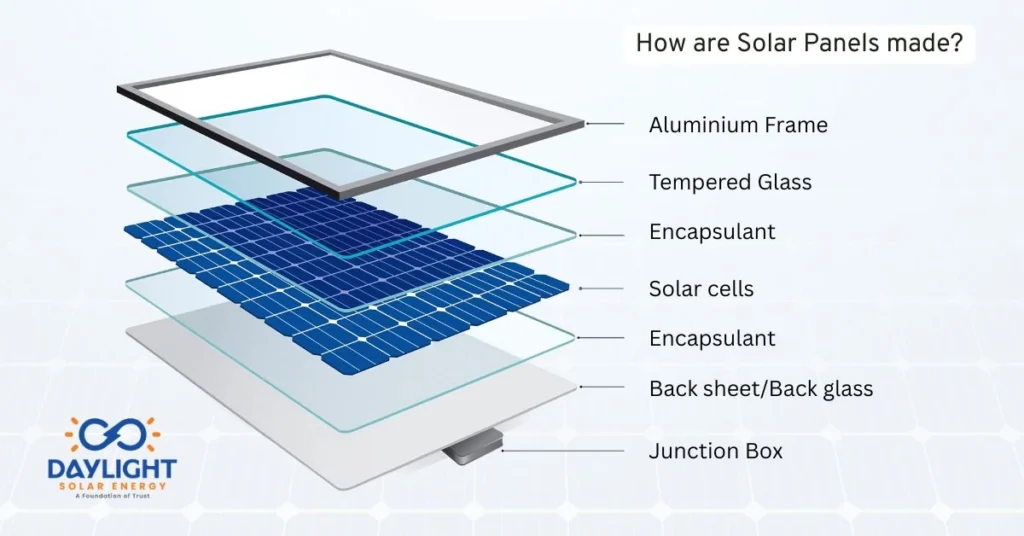
At the heart of every solar panel are solar cells — the real power makers. Think of them as little energy catchers that work together. These cells are most often made from silicon, a natural material found in sand and rocks. Why silicon? Because it’s great at reacting to sunlight in a way that creates electricity.
Each individual solar cell on its own doesn’t produce much power — just a small amount. But when you group dozens of these cells together in a panel, suddenly you have something strong enough to run lights, fans, TVs, and more.
The cells are carefully arranged in layers and protected by glass on the front and a solid backsheet behind, all held together in a metal frame. This setup keeps them safe from weather while still letting sunlight through.
So the next time you see those panels on a rooftop, just remember — it’s a team of tiny silicon cells, working together to turn sunshine into energy.
2. How Do They Turn Sunlight into Electricity?

Imagine the sun as a giant energy ball in the sky. When it shines down on your solar panels, here’s what happens:
- Sunlight hits the solar panel on your roof.
- Solar cells inside the panel absorb that light.
- Inside each cell, tiny particles called electrons get excited from the sunlight.
- These moving electrons create a flow of electricity — just like how water flows through a pipe.
- That electricity travels through wires and goes directly into your home’s electrical system or battery.
In short: sunlight in, electricity out — all without any noise, smoke, or moving parts.
It’s kind of amazing when you think about it. You’re using natural sunlight to power your lights, TV, fridge, and more — all while cutting down your electricity bills and being kinder to the planet.
3. From Panels to Power: Behind the Scenes
The journey of solar power begins when sunlight hits the solar panels on your roof. These panels capture sunlight and convert it into Direct Current (DC) electricity. But here’s the thing—most of the appliances and electronics in your home, from your lights to your fridge, actually run on Alternating Current (AC) power.
This is where the magic of the inverter comes into play. Think of the inverter as the middleman that makes solar power usable for everyday life. It takes the DC energy generated by the solar panels and transforms it into AC electricity, which is what powers your home. Without this vital step, the energy from the sun would just be a nice idea, not something that powers your lights, devices, and appliances.
So, next time you flip a light switch, you can picture the entire process: sunlight absorbed by the panels, transformed into energy, and finally converted into usable power by your inverter. It’s an impressive chain of events that brings the sun’s energy straight into your home.
Now you’ve got a clear picture of how solar panels work — from sun rays to power in your plugs!
4. Why Should You Care?

Understanding how solar panels work is not just about curiosity. It helps you make informed decisions when thinking about switching to solar. You’ll know what to expect, where the power goes, and how much you could save on your electricity bills over time.
Plus, solar energy is renewable, meaning it’s good for the planet. It reduces your carbon footprint and helps create a cleaner, more sustainable future.
5. Maintenance Is Easier Than You Think
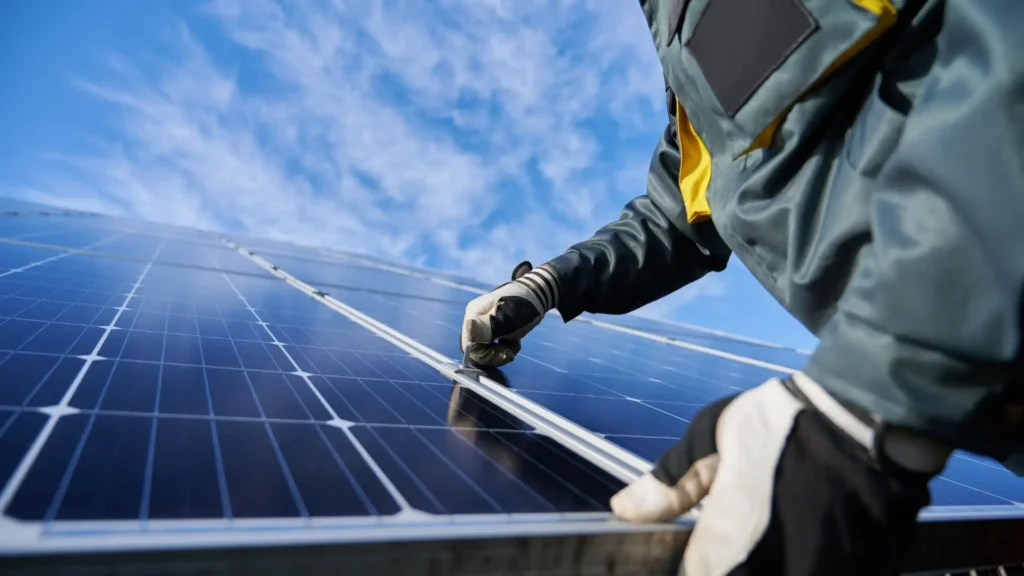
Once you install solar panels, there’s not much maintenance involved. Occasionally cleaning the panels and having an annual checkup is usually enough. The better you understand how solar panels work, the easier it is to care for them and ensure they run efficiently for years to come.
Now that you have a clear understanding of how solar panels work, it’s easier to see why so many homeowners are making the switch. From absorbing sunlight to powering your home, solar panels are a reliable, eco-friendly, and cost-effective solution. Whether you’re just curious or seriously considering going solar, this knowledge gives you a solid foundation to make smarter, greener choices for your future.
Let’s Build a Brighter Future Together
Join the solar revolution with Daylight Solar Energy and start generating your own power today. Whether you’re a homeowner or a business owner, we have the perfect solar solution tailored just for you.
👉 Ready to make the switch? Contact us now for a free consultation!
Frequently Asked Questions (FAQs)
How solar panels work in simple terms?
Solar panels absorb sunlight using solar cells, convert it into electricity, and power your home using inverters.
Are solar panels worth the investment?
Yes! They reduce your power bills, increase home value, and are great for the environment.
Do solar panels work in cloudy weather?
Yes, they still produce energy—just less than on sunny days.
How long do solar panels last?
Most systems last 25 to 30 years with minimal maintenance.
Can I install solar panels myself?
It’s best to hire a professional for safety and performance. But knowing how solar panels work helps you understand the process better.

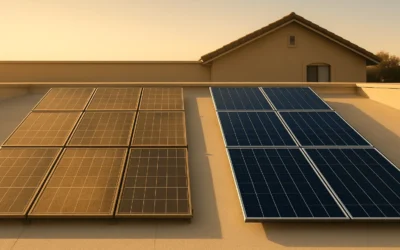
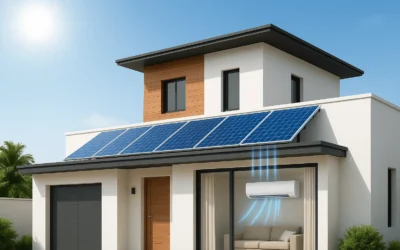

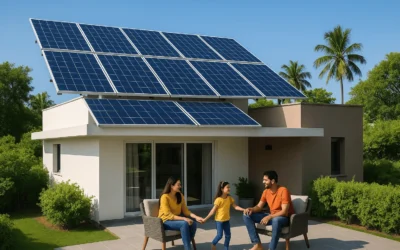

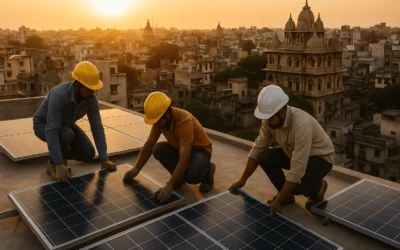

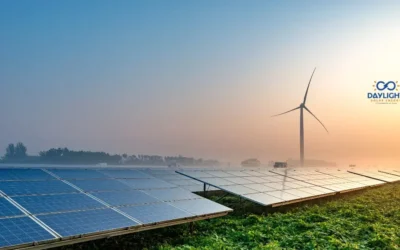

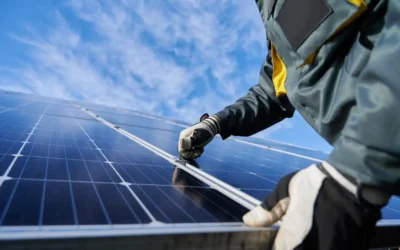
0 Comments